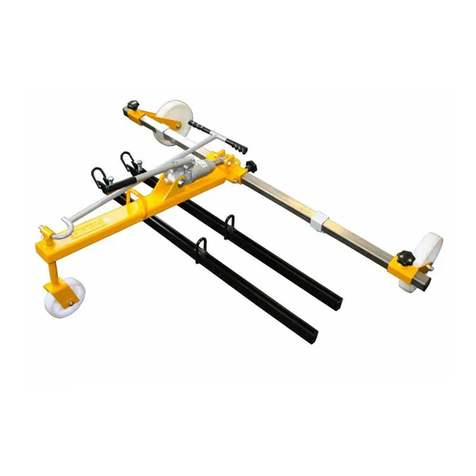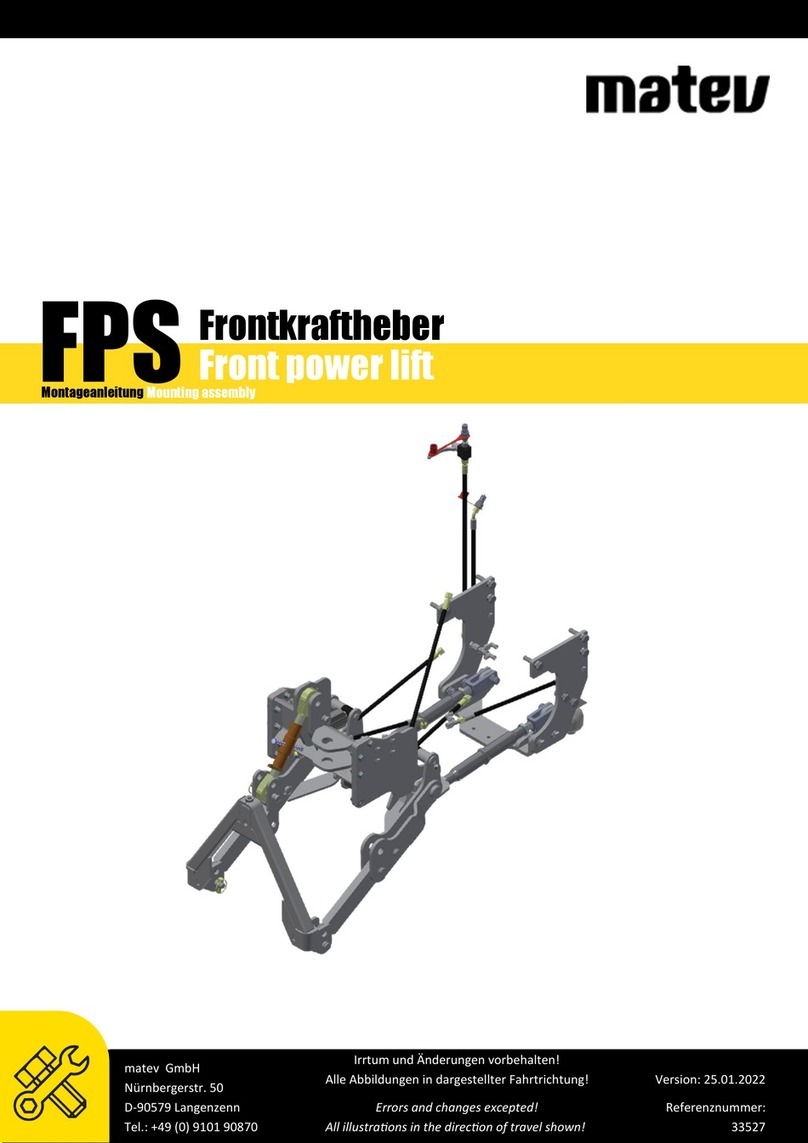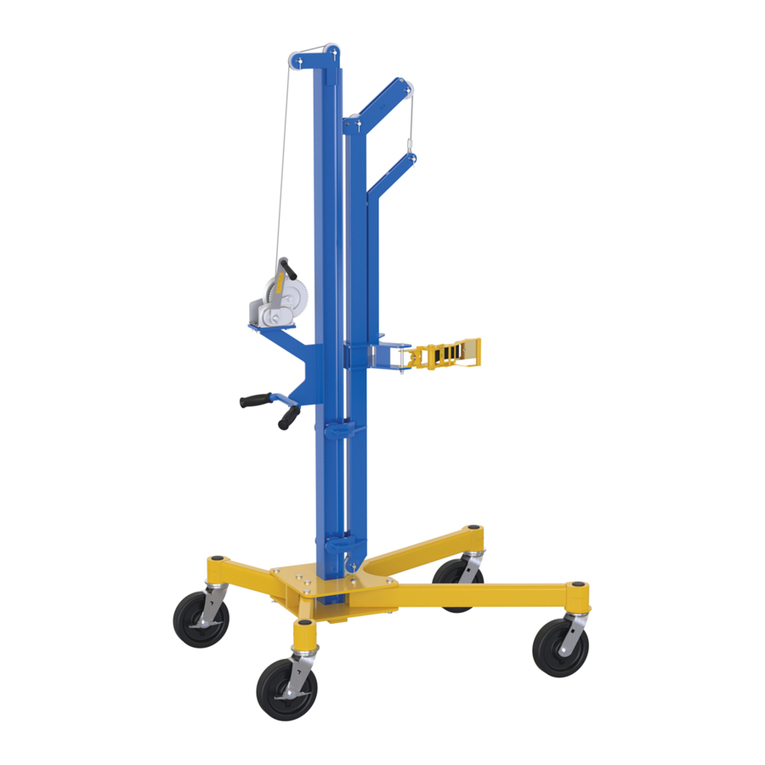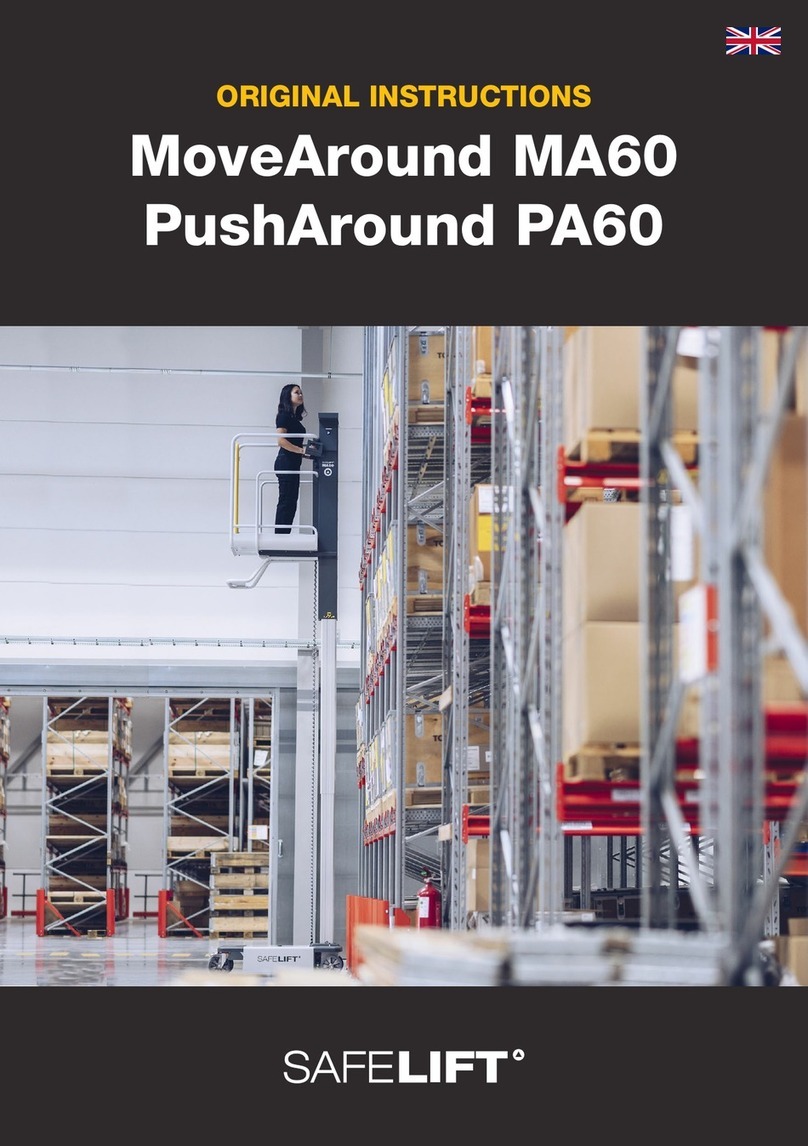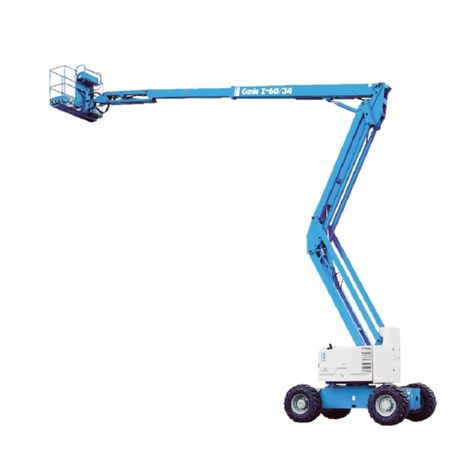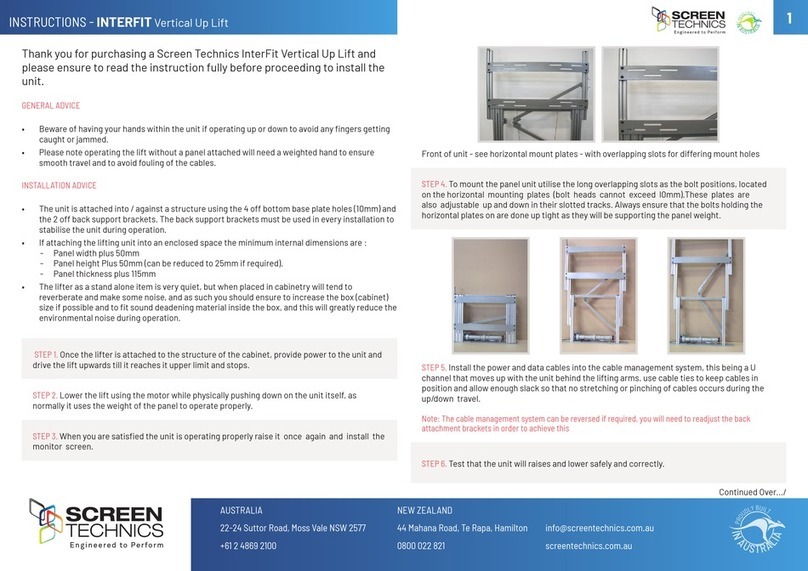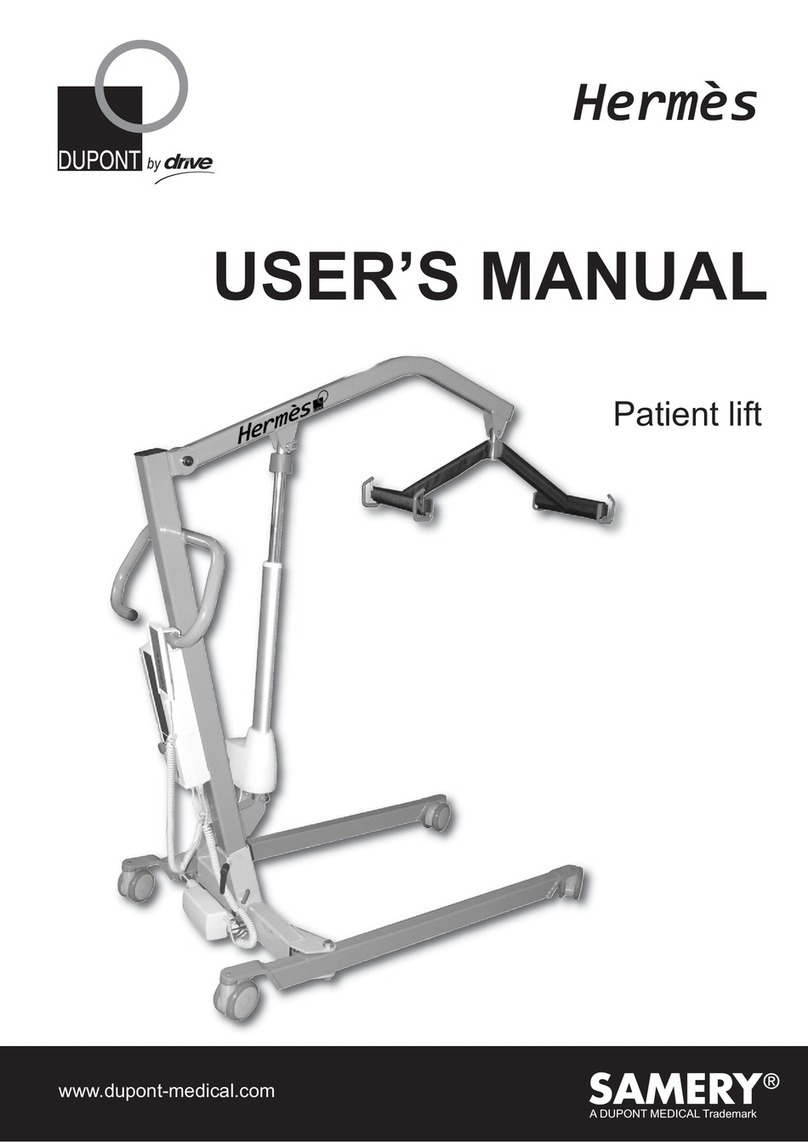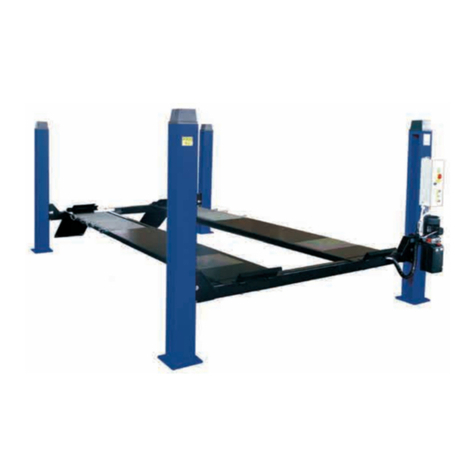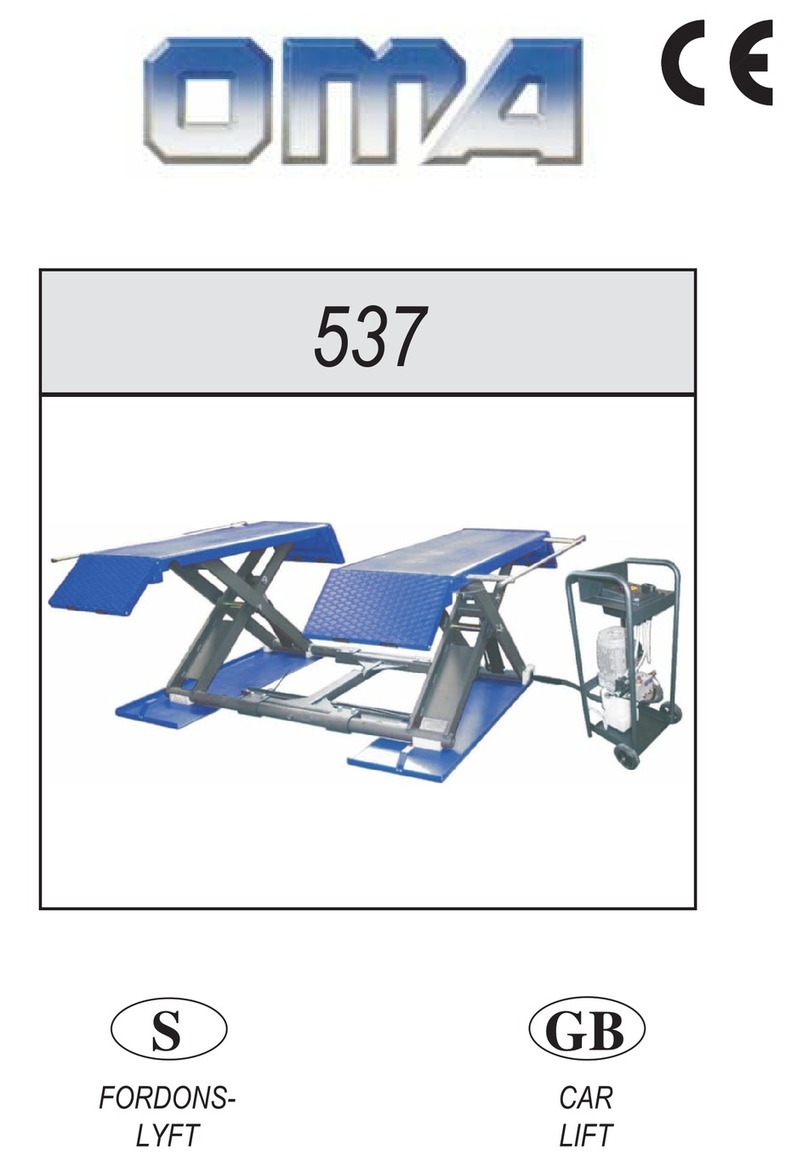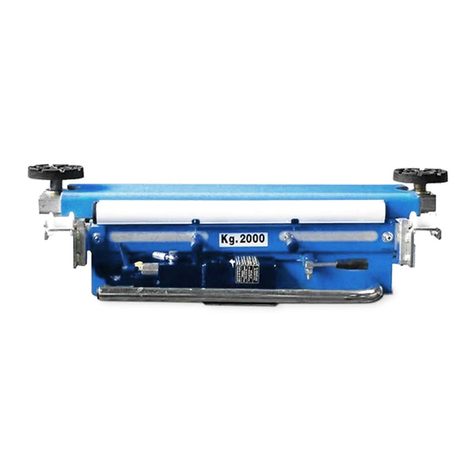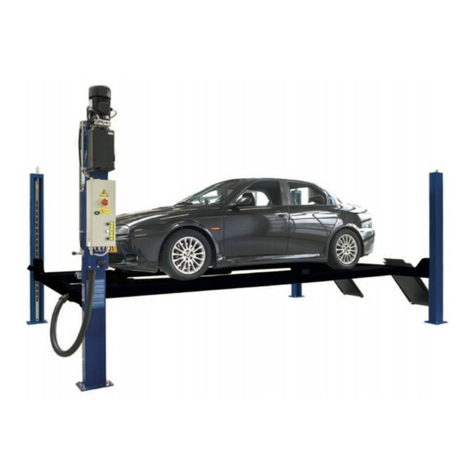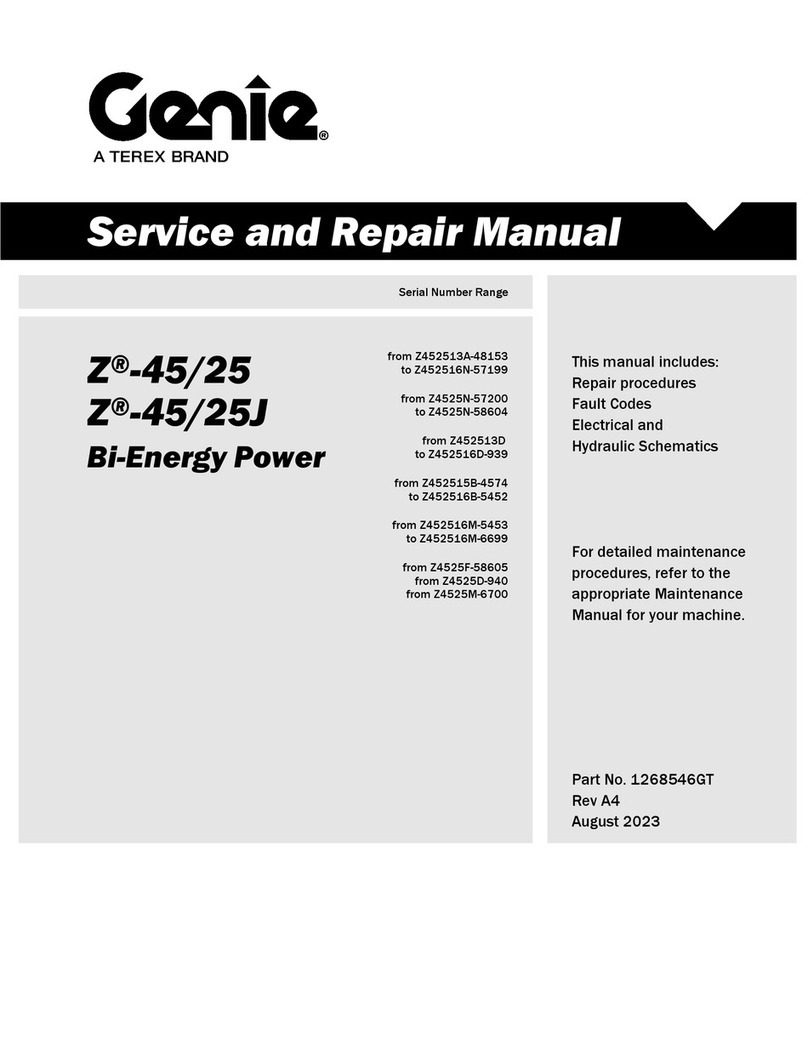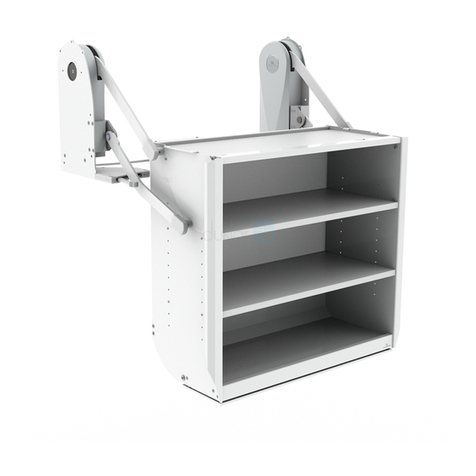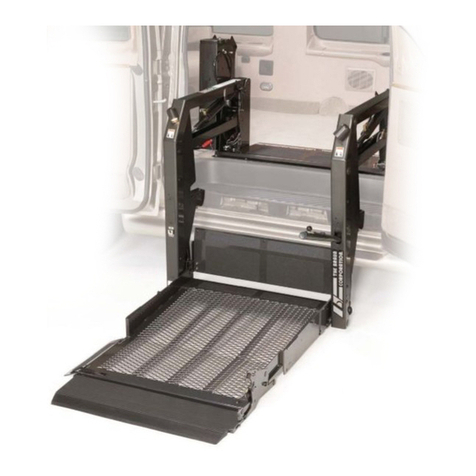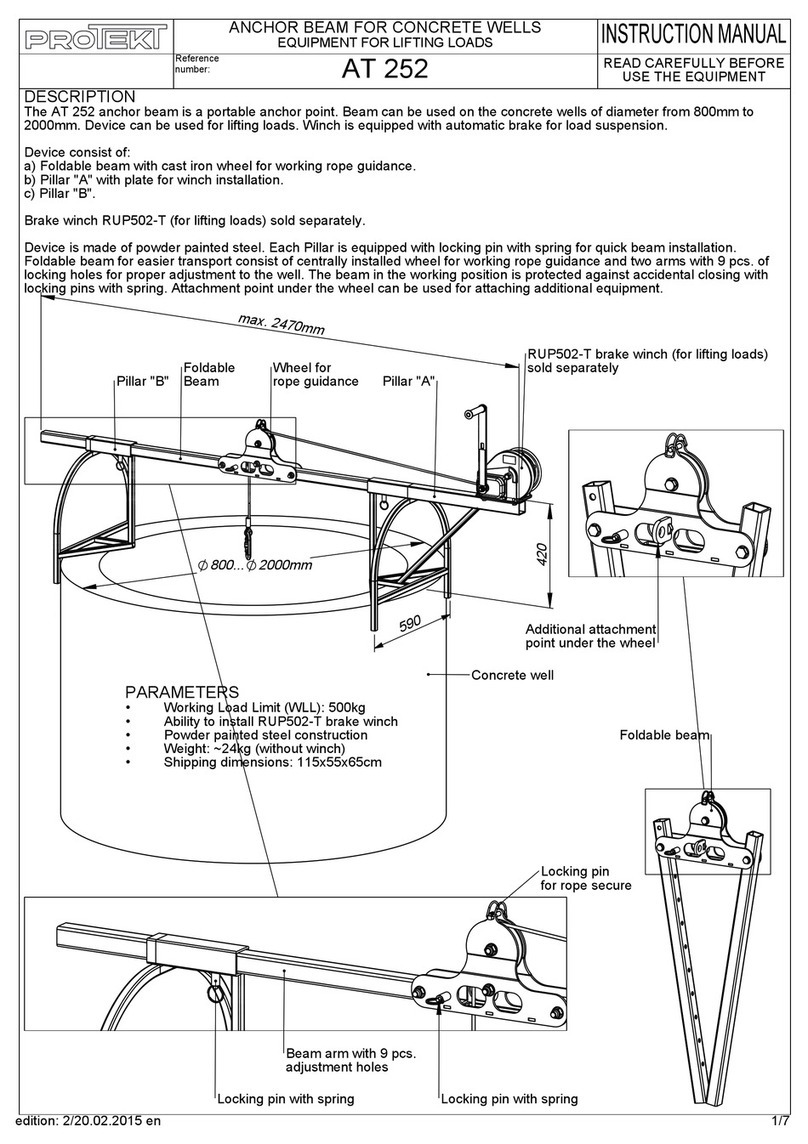
IMBALLAGGIO, TRASPORTO E
STOCCAGGIO.
LEOPERAZIONIDIIMBALLAGGIO,SOLLEVA-
MENTO,MOVIMENTAZIONE,TRASPORTO E DI
-
SIMBALLO DEVONOESSERE AFFIDATE ESCLU
-
SIVAMENTEAPERSONALECHESIAESPERTO
INTALIOPERAZIONIECHECONOSCABENEIL
PONTESOLLEVATORE ED IL PRESENTEMA-
NUALE
IMBALLAGGIO
Ilpontesollevatorevienespeditosmontatoneiseguentipezzi:
Peso di un pez zo (Kg)
4colonne 44
2traverse 95
2rampedisalita 25
2fermaruote 2,6
2pedane: latocomando 325
latoopposto 240
1assiemecentralina 30
kitsalvapiedi 10
Ilpontesollevatorevienespeditoavvoltoinununicopaccoconfe-
zionatoconunalastradimaterialetermoretraibileesigillatocon
duereggemetalliche(Fig.1).
Ilpeso mediodel paccoè dicirca 1050Kg.
SOLLEVAMENTO E MOVIMENTAZIONE
Ipacchipossonoessere sollevatiespostatisoltantoconcarrelli
elevatori,mantenendounadistanzadialmeno90cmtraidue
braccidellaforca(Fig.1).
Sollevareunsolopaccopervolta.
Imezzisceltidevonoessereidoneialsollevamentoespostamento
insicurezza,tenendocontodidimensioni,peso,baricentrodel
pacco,sporgenze,partidelicatedanondanneggiare.
Fig.1 Imballoespostamento
Fig.1 Packingandmoving
NonsollevareospostareMAIilsollevatoremediantefascieo
imbracatureperilsollevamento(Fig.2).
STOCCAGGIO
Gliimballidevonosempreessereconservatiinluoghicopertiepro-
tettiatemperaturecompresefra-10°Ce+40°C.enondevono
essereespostiairaggidirettidelsole.
IMPILAMENTO DEI PACCHI
E’sempresconsigliatoinquantoilpaccononèprevistoperl’impi-
lamento.Labasestretta,ilpesonotevoleelaconsistenzadell’im-
ballorendonoproblematicoedelicatol’impilamento.
Qualorasirendessenecessariol’impilamento,occorreadottare
molteprecauzionieinparticolare:
-nonsuperaremaiiduemetridialtezzadellapila;
- non fare mai pile di pac chi sin go li, ma fare sem pre pile di pac chi a
coppieincrociatetraloro,inmododaottenerecatasteconuna
basepiùlargaedunacertastabilità;quindiprovvederearendere
sicurolostoccaggio,utilizzandoregge,legaccioaltrimezziidonei.
Neicassonideicamion,neicontainer,neivagoniferroviarisi
possonoimpilarealmassimoduepacchi,purchèvengano
reggiatitraloroeassicuraticontrolacaduta.
PACKING, TRANSPORT AND
STORAGE.
PACKING,LIFTING,HANDLING,TRANSPORTING
AND UNPAC KING OPE RA TIONS MUST BE PER-
FORMEDONLYBYEXPERIENCEDPERSONNEL
WITHAPPROPRIATEKNOWLEDGEOF THE LIFT
ANDAFTERREADINGTHISMANUAL
PACKING
Theliftisshippeddisassembledinthefollowingunits:
Unit weight (kg)
4posts 44
2crossbeams 95
2vehicleramps 25
2wheel stops 2,6
2platform: controlside 325
oppositeside 240
1hydraulicpowerunit 30
footprotectionkit 10
The lift is ship ped in a sing le pack en clo sed by a sheet of heat
shrinkmaterialandrestrai nedbytwosteelstraps(fig.1).
The avera ge weight of the pack is 1050 kg.
LIFTING AND HANDLING
The packs can belif ted andtranspor ted onlyusinglift trucks,
and kee ping the fork arm cen tres at least 90 cm apart (Fig.1).
Lift only one pack at a time.
Theliftingequipmentmustbecapableofliftingandmo vingthe
packsincompletesafety,bearinginmindthedimensions,weight
andcentreofgravityofthepack,anyprotrudingparts,anddelicate
partstoprotectfromimpactdamageetc..
Fig.2
Fig.2
NEVERattempttohoistortransport theunitusinglifting
slings (Fig.2).
STORAGE
The packs must be kept in a co ve red and pro tected area in a tem
-
peratu rerangeof -10°Cto+40°C.They mustnotbeex posedtodi-
rectsunlight.
STACKING THE PACKS
Weadviseagainststackingbecausethepacksarenotdesigned
forthistypeofstorage. Thenarrowbase,heavyweightandlarge
sizeofthepacksmakestackingdifficultandpotentiallydangerous.
Ifstackingisunavoidable,useallappropriateprecautions:
- ne ver stack to more than 2 me tres in height;
- ne ver make stacks of sing le packs, al ways stack pairs of packs in
a cross pat tern so that the base is big ger and the re sul ting stack is
morestable; once thestackiscomple te,restrainitusing straps, ro -
pesorothersuitablemethods.
Ama xi mumof two packscanbe stac kedonlor ri es,incon tai-
ners, and in rail way wa gons, on the con di tion that the packs
arestrappedtogetherandrestrainedtostopthemfalling.
3
